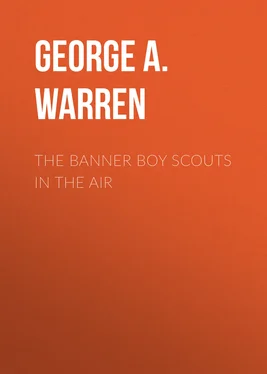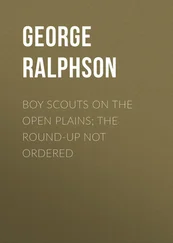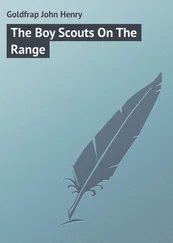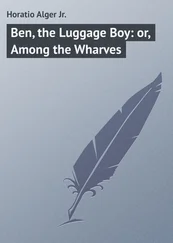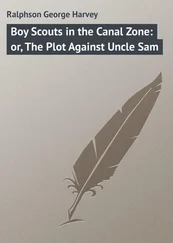George A. Warren - The Banner Boy Scouts in the Air
Здесь есть возможность читать онлайн «George A. Warren - The Banner Boy Scouts in the Air» — ознакомительный отрывок электронной книги совершенно бесплатно, а после прочтения отрывка купить полную версию. В некоторых случаях можно слушать аудио, скачать через торрент в формате fb2 и присутствует краткое содержание. Жанр: foreign_children, foreign_antique, foreign_prose, на английском языке. Описание произведения, (предисловие) а так же отзывы посетителей доступны на портале библиотеки ЛибКат.
- Название:The Banner Boy Scouts in the Air
- Автор:
- Жанр:
- Год:неизвестен
- ISBN:нет данных
- Рейтинг книги:5 / 5. Голосов: 1
-
Избранное:Добавить в избранное
- Отзывы:
-
Ваша оценка:
- 100
- 1
- 2
- 3
- 4
- 5
The Banner Boy Scouts in the Air: краткое содержание, описание и аннотация
Предлагаем к чтению аннотацию, описание, краткое содержание или предисловие (зависит от того, что написал сам автор книги «The Banner Boy Scouts in the Air»). Если вы не нашли необходимую информацию о книге — напишите в комментариях, мы постараемся отыскать её.
The Banner Boy Scouts in the Air — читать онлайн ознакомительный отрывок
Ниже представлен текст книги, разбитый по страницам. Система сохранения места последней прочитанной страницы, позволяет с удобством читать онлайн бесплатно книгу «The Banner Boy Scouts in the Air», без необходимости каждый раз заново искать на чём Вы остановились. Поставьте закладку, и сможете в любой момент перейти на страницу, на которой закончили чтение.
Интервал:
Закладка:
George A. Warren
The Banner Boy Scouts in the Air
CHAPTER I
Paul and Jack were dashing along on their bicycles through Main Street. It was a clear, beautiful summer day. School was over and they grasped the first opportunity to run over to the airport about a mile outside of Stanhope and which had only recently been completed.
The two boys wore their Scout uniforms and they pedalled along swiftly. Several townspeople paused to watch them pass by and wondered what might be the cause of their haste. Paul stuck his left hand out and they turned right into Oliver Street, thus taking a short cut to the highway and then to the aerodrome. When they arrived at their objective, they dismounted and stood around, taking everything in with their eyes.
The flying field was about a mile long and half a mile wide and entirely cleared of trees, bushes or anything that might be an obstruction. To one side were a group of sheds and a building, evidently the office. At about the middle of the field there was a solitary monoplane.
Jack gasped. Finally he remarked, “Gee, isn’t this grand?”
Paul nodded. He was as much overcome with the wonder of it as his chum. “Boy!” he exclaimed, “it sure is.”
Jack said, “Let’s walk over to the buildings.”
His chum nodded. “Sure, let’s go.”
Pushing their bicycles along side of them, they walked across the field. They could barely contain themselves with wonder, joy and astonishment, which was the cause of their lack of speech. For the past weeks they had been so excited by the news of the flying field being completed that they found it difficult to control themselves enough to go on with their school work. And it wasn’t only Jack and Paul, but all their chums had suddenly become interested in aeronautics. They began to boast of their ambition to become pilots, fly all over the world and enjoy all sorts of adventurous experiences. At times, instead of studying their biology lessons or French, they would be reading thrilling air stories or books on flying.
As the two boys approached the office building, a man emerged and waved to them. They waved back. Paul whispered, “I’ll bet it’s Major McCarthy, the manager.”
Paul was right. The Major was a tall, stocky man of about forty and almost bald. He smiled to them and said, “Hello fellows. I’m Major McCarthy. Is there anything I can do for you?”
Jack said, “We came over to look around, if you have no objections, Major.”
The Major smiled warmly. “Oh, none whatsoever. You’re welcome.”
Paul said, “My name is Paul—Paul Morrison.”
“And your dad is Dr. Morrison?”
“That’s right. How did you know?”
“Well, there’s only one Dr. Morrison in Stanhope. Glad to meet you, Paul.”
The two shook hands. Jack said, “I’m Jack Stormways.”
“Glad to know you,” the major said and they shook hands.
For a few seconds there ensued an embarrassed silence. Neither Jack nor Paul could think of anything to say and Major McCarthy was waiting for them to ask questions. Finally the major said, “Suppose you boys lean your bicycles against the wall and I’ll show you around. There isn’t much doing now and I have some time on my hands.”
Paul cried, “I think that’s swell of you.”
And Jack added, “Thanks a lot.”
The boys quickly leaned their wheels against the wall and then joined the major, one on either side of him. The major said, “I might as well begin by telling you something about the field. You’ll notice that the field is cleared of all obstructions. That’s absolutely necessary to make sure there is nothing to cause an accident in taking off or landing. The field is about a mile long. That’s to provide plenty of room for taking off or landing.”
Jack interrupted. “How much of a run does it take to land or take off?”
Paul nodded, implying that he too was interested in the question. Major McCarthy answered, “It all depends. A light ship can take off in about a hundred yards or less. A big ship heavily loaded may take a quarter or half a mile or even more to take off. In landing, the ground speed depends a lot upon the velocity of the wind. The stronger the wind, the less space required in which to land.”
They were walking towards the sheds. Pointing, Paul asked, “What’s that?”
The major looked in the direction the boy was pointing. “That’s a wind indicator,” he said. “That shows which way the wind is blowing.”
“And what’s the purpose of that?” Paul asked.
“To tell which way to land. You always land directly into the wind.”
They were heading toward the monoplane. The boys were thrilled. They had seen planes in the movies and in the daily newspapers, but they had never seen a real plane. As soon as they neared the ship, the first reaction of the boys was to pat it, caress it as if it were a live thing. The major smiled casually and understood how they felt. He said, “Suppose the two of you get into the observer’s seat while I get into the pilot’s place and I’ll explain a few things to you about a plane.”
The boys gasped for breath, they were so shocked by the invitation. “Do you think it’s all right?” Paul asked bewildered.
“Of course,” the major answered, “otherwise I wouldn’t ask you.”
Quickly, lest he reconsider his invitation, the boys scrambled into the observer’s seat. Major McCarthy climbed into the pilot’s seat. They leaned over the major’s shoulders and stared at a bewildering and numerous collection of gadgets on the dashboard. The major said, “First I had better explain to you the meaning of these gadgets.” Pointing to a dial, he explained, “This is the revolution counter. The engine in this plane is designed to give about two thousand revolutions per minute. For all practical purposes, about 1700 or 1800 revolutions are sufficient. Here, on the right, is the throttle lever. And here are the gasoline and oil gauges. This is the ‘doper’ which pumps a spray of gasoline into the engine to help in starting it up. These are the gasoline taps connecting the two tanks and each of the tanks with the feed pipes leading to the carburetors. And this is the ignition control. You keep it advanced when running but retarded when starting up. This is the water temperature indicator. You always keep the water pretty hot.” He paused, then he asked, “Do you have any questions?”
The boys shook their heads, bewildered by it all. “If there are no questions,” Major McCarthy said, “then I’ll continue.”
“This is the control lever, or the ‘joystick’ as it is commonly called.” And he grasped the handle of a short straight stick that protruded upwards between his legs from the floor of the cockpit. “The stick is attached to a universal joint, and it controls both the longitudinal movements as well as the lateral movements by means of wires attached to the elevator and the ailerons. If you want to go up, all you do is pull the stick back; if you want to go down, you push the stick forward. Now notice where my feet are—on the rudder bar. If I want to turn to the left, I push my left foot forward; if I want to turn to the right, I push the right foot forward. Simple, isn’t it?” And he looked up to see the astonishment on the boys’ faces. He continued with his interesting lecture. “Now when I want to turn, I must push the joystick over simultaneously and in the same direction as the rudder. This is called ‘banking’ on one side. The object of banking on a turn is to offer the under-surface of the wings as a plane of resistance to the air. Not banking the plane over retards the forward speed. If you don’t bank enough you may get into a ‘flat turn’. Now a ‘flat turn’ is bad because you may thus stall the motor and take a nose dive and unless you keep your head clear and straighten out again, you’ll most likely crash. Do you understand what I’m talking about?”
Читать дальшеИнтервал:
Закладка:
Похожие книги на «The Banner Boy Scouts in the Air»
Представляем Вашему вниманию похожие книги на «The Banner Boy Scouts in the Air» списком для выбора. Мы отобрали схожую по названию и смыслу литературу в надежде предоставить читателям больше вариантов отыскать новые, интересные, ещё непрочитанные произведения.
Обсуждение, отзывы о книге «The Banner Boy Scouts in the Air» и просто собственные мнения читателей. Оставьте ваши комментарии, напишите, что Вы думаете о произведении, его смысле или главных героях. Укажите что конкретно понравилось, а что нет, и почему Вы так считаете.
